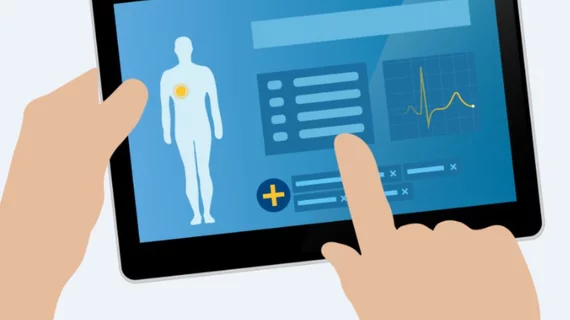Patient portals have been associated with numerous benefits, but there are challenges to consider as well, according to a new analysis published in the Journal of the American College of Radiology.
“These patient portals have been shown to improve patient engagement in making health decisions, provide an efficient and timely means of communication between health care providers and office staff members and patients, and streamline care by permitting online inquiries and requests for prescription renewals and appointments,” wrote lead author Priscilla J. Slanetz, MD, MPH, department of radiology at Boston University Medical Center, and colleagues. “However, patient portals can also have downsides. Besides the potential for data breaches, these portals can be challenging for less tech-savvy patients to navigate, especially the elderly, and can lead to misunderstandings as patients encounter unfamiliar language and terminology.”
So what can be done to address these challenges? The analysis included comments from three radiologists, who all shared their thoughts on how the various issues related to patient portals should be handled. These are some of the ideas suggested by those specialists:
1. Adopt a tailored approach to patient portal development
Arun Krishnaraj, MD, MPH, University of Virginia School of Medicine in Charlottesville, noted that these portals will become more user-friendly if developers pay close attention to patient feedback. The American College of Radiology’s Commission on Patient- and Family-Centered Care, for instance, has found that patients desire “improved communication” across the board. With this in mind, Krishnaraj explained, “a more tailored approach to delivering information will be far more successful than a one-size-fits-all approach.”
“The precedent set by companies such as Amazon, which allow for individual preferences and filters, is now so pervasive that anything less than a tailored experience will fall short of expectations and ultimately be unsuccessful,” Krishnaraj wrote.
2. Produce patient-friendly radiology reports
Christoph I. Lee, MD, MS, University of Washington School of Medicine in Seattle, noted that more than 50% of patients at his institution access their radiology reports online. This gives radiologists more opportunities to serve as “valued, patient-facing health care advocates,” he said, and that means providing reports that actually make sense when they are accessed.
“To become more effective health care advocates, one of the first efforts should be to provide written radiologic impressions on the portal that can be better understood by patients,” Lee wrote. “Our radiology lexicon needs to become more readable for nonmedical audiences.”
Various solutions exist that can help radiologists with this, but he added it is also helpful for specialists to modify their terminology themselves and make a real effort to be understood.
“The AMA and the National Institutes of Health recommend that patient materials be written at a grade 6 reading level or lower,” wrote Ana P. Lourenco, MD, Alpert Medical School of Brown University in Providence, Rhode Island. “Virtually none of our imaging reports meet these criteria.”
Adding pictures is another way these reports can be easier for patients to understand, Lourenco noted.
3. Encourage radiologist-patient communication
Providing contact information is another way radiologists can take their reports to another level as far as providing quality is concerned.
“These direct communications regarding radiology reports can potentially help prevent medical errors (ie, incorrect study indication or clinical concern clarified by the patient) and lead to improved adherence to management (ie, reinforcement of recommendations for future imaging follow-up directly with patients),” Lee observed.

